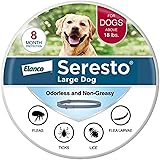Summer is a time for fun and outdoor activities, but the hot weather can pose significant risks to our furry friends. Pets, particularly dogs and cats, are susceptible to heat exposure, which can lead to heat exhaustion, heatstroke, and even death if not properly managed. Here are some crucial tips to prevent and remedy heat exposure in pets during the summer months.
1. Provide Ample Water and Shade
Ensure your pets have constant access to fresh, cool water. Dehydration can set in quickly, especially in high temperatures. Place multiple water bowls around your home and yard, and consider adding ice cubes to keep the water cool for longer. When outside, provide shaded areas where your pet can retreat from the sun. Trees, umbrellas, or specially designed pet tents can offer sufficient protection from direct sunlight.
2. Limit Exercise During Peak Heat
Exercise is important, but during the hottest parts of the day, it can be dangerous. Schedule walks and playtime for the early morning or late evening when temperatures are cooler. Avoid intense exercise and opt for shorter, more frequent walks to prevent overexertion. Pay close attention to your pet’s behavior; heavy panting, excessive drooling, or lethargy are signs that your pet needs a break.
3. Never Leave Pets in a Parked Car
Even with the windows cracked, a parked car can quickly become a deadly oven. Temperatures inside a vehicle can rise to dangerous levels within minutes, leading to severe heatstroke. If you need to run errands, leave your pets at home where they can stay cool and safe.
4. Grooming and Coat Care
Regular grooming can help keep your pet’s coat in optimal condition. While it might seem like a good idea to shave your pet to keep them cool, their fur often provides protection against the heat and sunburn. Instead, focus on brushing regularly to remove excess fur and prevent matting. For dogs with thick fur, consider trimming, but avoid shaving down to the skin.
5. Watch for Signs of Heatstroke
Heatstroke is a medical emergency. Symptoms include heavy panting, excessive drooling, red or pale gums, rapid heartbeat, vomiting, diarrhea, and lethargy. If you suspect your pet is suffering from heatstroke, move them to a cooler area immediately. Offer water but do not force them to drink. Cool them down with wet towels, particularly on the head, neck, and chest, and seek veterinary assistance immediately.
6. Create a Cool Environment
Indoors, keep the environment cool with fans or air conditioning. Cooling mats or vests specifically designed for pets can also help regulate their body temperature. Ensure that your pets have a comfortable, cool spot to rest, away from direct sunlight and heat sources.
7. Special Considerations for Certain Pets
Some pets are more susceptible to heat than others. Brachycephalic breeds (such as Bulldogs, Pugs, and Persian cats) with short snouts are particularly prone to heat-related issues due to their compromised airways. Older pets, overweight pets, and those with underlying health conditions also need extra care in the heat. Be particularly vigilant with these pets and limit their exposure to hot environments.
Conclusion
Preventing heat exposure in pets requires proactive measures and keen observation. By ensuring they have access to water and shade, limiting their exercise during peak heat, never leaving them in parked cars, maintaining proper grooming, and recognizing the signs of heatstroke, you can keep your furry friends safe and comfortable during the summer months. Always err on the side of caution and prioritize your pet’s well-being to enjoy a happy and healthy summer together.






















